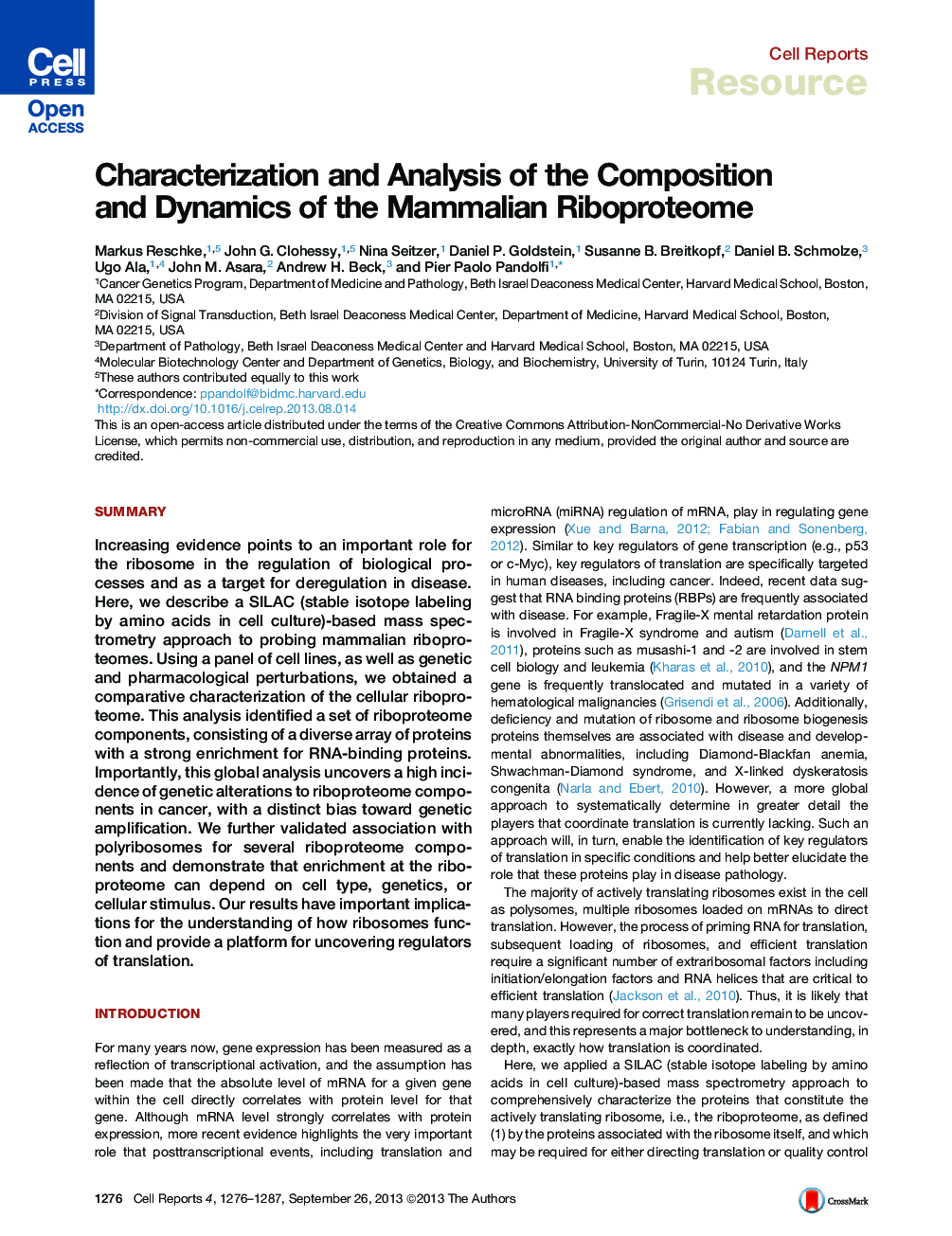| Article ID | Journal | Published Year | Pages | File Type |
|---|---|---|---|---|
| 2042024 | Cell Reports | 2013 | 12 Pages |
•Mass spectrometry identifies differential riboproteome components in cancer cells•Riboproteomic genes are frequent targets of genetic amplification in cancer•Riboproteomics identifies previously unrecognized ribosome-associated proteins
SummaryIncreasing evidence points to an important role for the ribosome in the regulation of biological processes and as a target for deregulation in disease. Here, we describe a SILAC (stable isotope labeling by amino acids in cell culture)-based mass spectrometry approach to probing mammalian riboproteomes. Using a panel of cell lines, as well as genetic and pharmacological perturbations, we obtained a comparative characterization of the cellular riboproteome. This analysis identified a set of riboproteome components, consisting of a diverse array of proteins with a strong enrichment for RNA-binding proteins. Importantly, this global analysis uncovers a high incidence of genetic alterations to riboproteome components in cancer, with a distinct bias toward genetic amplification. We further validated association with polyribosomes for several riboproteome components and demonstrate that enrichment at the riboproteome can depend on cell type, genetics, or cellular stimulus. Our results have important implications for the understanding of how ribosomes function and provide a platform for uncovering regulators of translation.
Graphical AbstractFigure optionsDownload full-size imageDownload as PowerPoint slide
